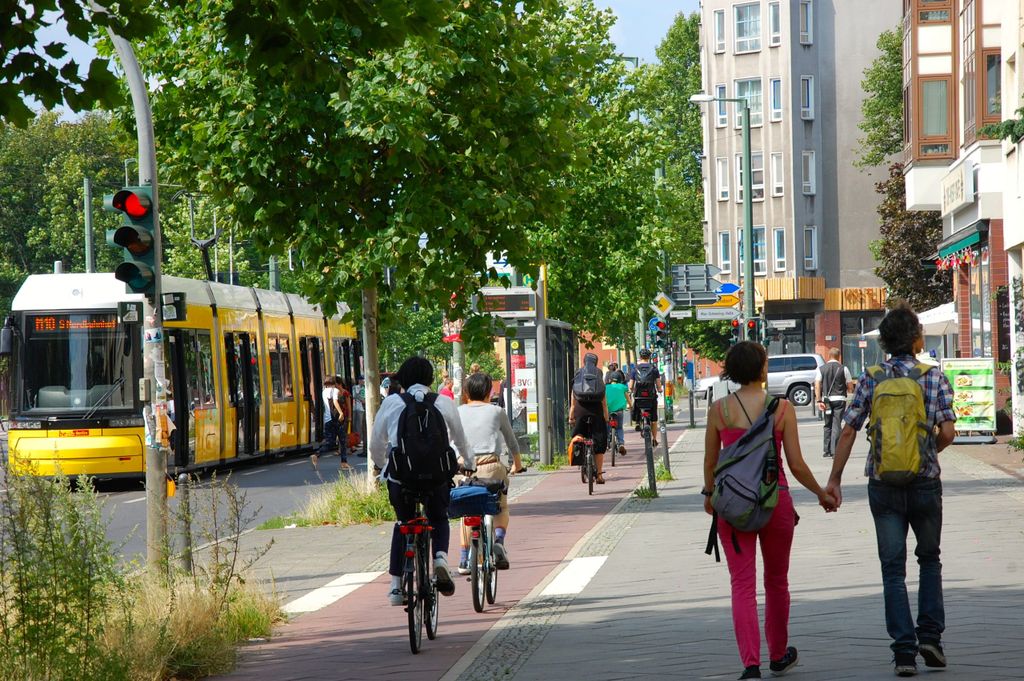
What on-demand and shared mobility looks like today (and where it’s going)
And the potential benefits of combined mobility
Cities across the world are beginning to adjust to a wider mobility mix and understand the need for combined mobility. Over the past decade, shared mobility, from vehicle sharing, on-demand mobility, and shared micromobility have grown impressively fast. In the United States for instance, shared micromobility trips jumped from just 2.4 million in 2011 to 147 million in 2022. Europe’s number rose even higher to 485 million trips.
While the pandemic was a setback, public transport and shared mobility ridership is recovering. Across the EU, shared mobility ridership increased 11% at the start of 2023 compared to 2022. The renewed interest in new mobility services makes it imperative for cities and towns to develop a sustainable and integrated model with existing mass transit networks.
Shared mobility, meaning the use of shared vehicles such as bikes, e-scooters, and cars, as well as on-demand mobility services like taxi and ride-hailing, can complement traditional public transport modes. When combined with existing public transport networks, shared mobility can enable everyone to have door-to-door trips using the modes that suit them best.
Types of shared vehicles
Types of on-demand mobility
for shared mobility & on-demand mobility
All in all, these new mobility modes make door-to-door journeys easier and fill in the gaps where it is less profitable for public transport to operate.
Because of this, shared vehicles and on-demand mobility services represent an enormous opportunity to encourage people out of their cars and onto greener modes of transportation. In turn, this can clean up our cities and towns, as well as free up swathes of public space used to park private cars which, on average, are occupied for just 57 minutes a day.
However, for this to happen, urban authorities must integrate shared mobility into existing public transport systems. Indeed, this is a transition happening right now.
And the market is maturing
New mobility promises to revolutionise urban transport. By 2030, the vehicle sharing market is forecasted to be worth €215.4 billion, double the 2019 figure, and on-demand mobility will be even bigger at €622 billion, a staggering 400% increase. So far, both have grown fast by emphasising market share over profitability. Indeed, only in 2022 did the first micromobility company experience a full profitable year.
But things are changing.
“We are seeing hybrid systems emerging, combining the advantages of both public and private systems. The times of completely unregulated private micromobility markets are over.”
The rise of public-private partnerships
Authorities are taking a bigger interest in shared mobility, owing to the sector’s growth and a convergence of common interests. This ranges from managing service levels to avoid oversaturation of the market, to negotiating advantageous contracts with chosen providers – and shutting out the rest.
Public-private collaborations, where authorities join forces with shared mobility operators and industry, aim to benefit both parties, as well as citizens, who will gain a more integrated and flexible public transport network.
Want more insights on the future of shared mobility? Watch our expert webinar!
A future for new mobility services
With this in mind, it essential for on-demand mobility and shared mobility services to form mutually beneficial partnerships with public transport operators and authorities. There are several reasons for this:
- Public authorities lack the innovative expertise of private operators & industry
- Private operators lack economy of scale & ability to manage public space
- Whereas authorities can build infrastructure & connect key hubs to boost shared mobility uptake and meet climate targets, leading to cleaner cities
- Which may facilitate more profitable operations for private operators
- Whom act as a complement to existing public transport networks
The reality on the ground
Now, different cities have chosen different strategies. Indeed, agreements between partners can be wide-ranging or diverse in nature, from giving private operators total control to publicly funding privately owned fleets or infrastructure. At a UITP workshop that gathered authorities and operators from the shared bikes sector, Dott’s Sebastian Schlebusch noted that “there’s not a single completely private or completely public shared bikes system in Europe.”
As such, the stage is set for combined mobility – although exactly how it will be achieved is yet to be decided. While authorities see that integrating public transport with new mobility is the best way to reduce reliance on private cars, shared mobility operators see the partnership as a way to embed themselves in the wider network and consolidate their market share in a historically dynamic and competitive environment.
However, stumbling blocks still remain in this effort. Indeed, there are areas where integration must go further (and likely will soon) if combined mobility is to be successful. This was also pointed out by sustainable mobility expert Benoit Beroud in UITP’s shared bikes event.
“If you want to fully integrate mobility into public transport, it will be easier if the database is the same for public transport and shared bikes so that you can collect data to analyse which trips are intermodal. But at the moment, we don’t have real figures around intermodality, as a lot of the results that we have so far are based on surveys.”
Where to go next?
How can we as an industry encourage intermodality and multimodality, if it is impossible to analyse it? This is just one of the questions that the shared mobility sector and public authorities must answer and tackle with over the coming years in order to deepen integration, while at the same time safeguarding data privacy and ensuring they deliver a high-quality, seamless passenger experience. The time is now for combined mobility – and the benefits are clear.
Part II: How shared mobility solutions can improve our cities and towns
UITP wants to advance shared mobility. That’s why we are launching a new shared mobility division. In the division, our committees and working groups will bring together professionals from the sector, from start-ups, to authorities, and operators, to facilitate knowledge exchanges.
Want to stay updated? Sign up to UITP newsletters and get the latest sent to your inbox!
The UITP Shared Mobility Division
- On-demand Mobility Committee
- Shared Vehicles Committee
- Combined Mobility Committee
- Automated Mobility Group







